New Parliament of India: What’s different from the old one?
New Parliament of India: What’s different from the old one?
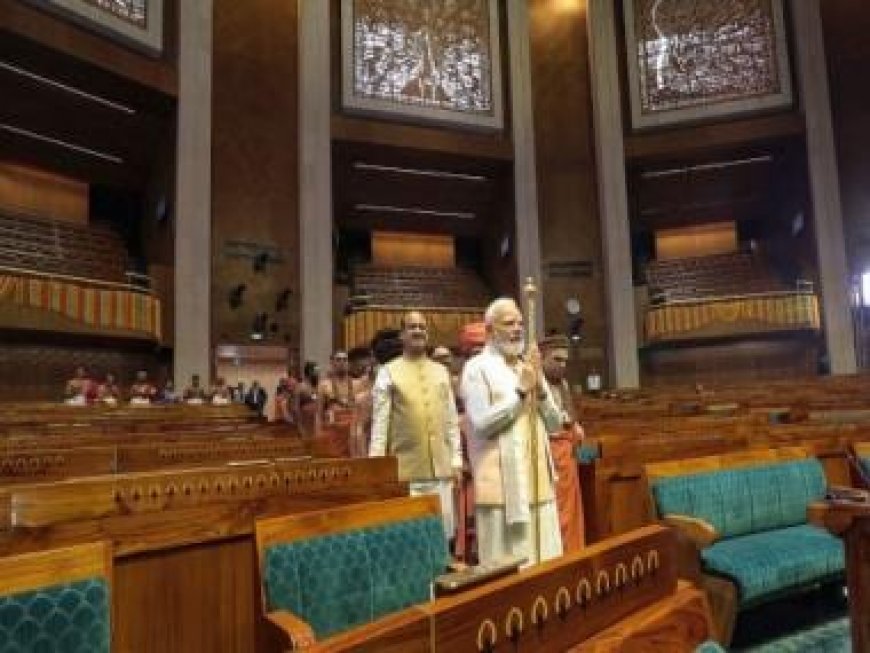
It’s a date that one should mark in their calendars, a date that will become a part of India’s history. In its 75th year of independence, India is inaugurating a new Parliament building on 28 May in a ceremony that shall remain etched in our minds. Prime Minister Narendra Modi, dressed in traditional attire, led the ceremony, walking into the new Parliament premises from its Gate No 1 and installing the historic ‘Sengol’ in the Lok Sabha chamber.
The event, which has been graced by several Union ministers and key BJP leaders – including Rajnath Singh, Amit Shah, S Jaishankar, Ashwini Vaishnaw, Mansukh Mandaviya and Jitendra Singh, Uttar Pradesh chief minister Yogi Adityanath, Assam chief minister Himanta Biswa Sarma and BJP president J P Nadda among others – and a boycott of many opposition parties, also saw a multi-faith prayer and Prime Minister Narendra Modi felicitating some workers who played key roles in the construction of the new Parliament building with shawls and souvenirs.
Catch all updates from the inauguration of the new Parliament building HERE
Incidentally, the event also marks the nine years of the Narendra Modi-led government at the Centre.
But what does the new Parliament building offer? Why does India need a new Parliament building? Let’s take a closer look.
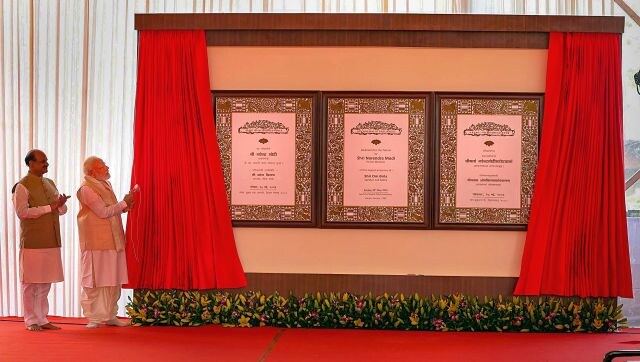
Need for a new Parliament building
The new Parliament building, part of the Central Vista project, is to replace the existing structure – which was commissioned in 1927. The current Parliament building was designed in the 1920s by Edwin Lutyens and Herbert Baker as a ‘Council House’. The design was never suitable to accommodate a bicameral legislature – a legislature with two houses – Lok Sabha and Rajya Sabha.
As of today, the building can accommodate 552 members and the Central Hall can seat 436 persons. In case of joint sittings, about 200 temporary seats are added in aisle, raising safety concerns. However, since independence, India’s population has grown leaps and bounds. Hence, there is a need to increase the number of Lok Sabha constituencies through delimitation and there will be a need to accommodate new members who may be added.
Additionally, a new Parliament building was badly needed as the building was under stress, with very little space for MPs to work and was completely out-dated in terms of seismic and fire safety measures and technological innovations. In fact in 2020, Union Housing and Urban Affairs Minister Hardeep Singh Puri had said that that the existing building was showing signs of distress and over utilisation from parliamentary activities over many years.
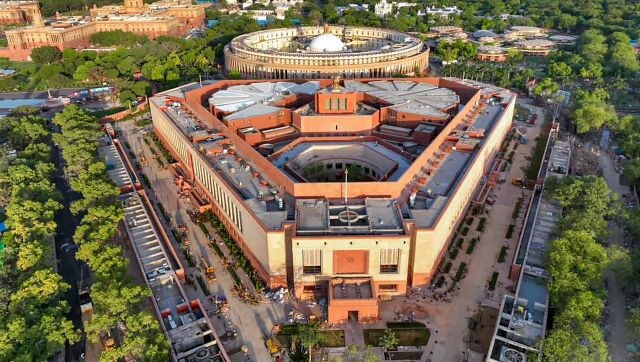
Representative of entire India
The first and foremost difference between the two buildings is the size and shape of the structures. The old structure was circular in nature. However, the new building inaugurated by Prime Minister Narendra Modi is triangular in shape. Moreover, the new building, built at an estimated cost of Rs 970 crore, is four-storeys high and spread over 64,500 square metres.

Constructed by Tata Projects Ltd, the new building will have a constitution hall, a lounge for MPs, a library, multiple committee rooms, dining areas as well as ample parking space. It is said that it will house almost 5,000 art pieces.
The building has three main gates – the Gyan Dwar, Shakti Dwar, and Karma Dwar – and will also provide separate entrances for VIPs, MPs and visitors.
It is important to note here that the material used for the new building has been sourced from across the country. For instance, the teakwood used in the building is sourced from Nagpur in Maharashtra, whereas the red and white sandstone comes from Sarmathura in Rajasthan. The Kesharia green stone has been procured from Udaipur, the red granite from Lakha near Ajmer and the white marble has been sourced from Ambaji in Rajasthan.
The steel structure for the false ceilings in the chambers comes from Daman and Diu while all the furniture inside the building has been crafted in Mumbai. The stone ‘jaali’ (lattice) works dotting the building were sourced from Rajnagar in Rajasthan and Noida in Uttar Pradesh.
The Ashoka Emblem has been built from material sources from Aurangabad, Jaipur. The Ashok Chakra donning the massive walls of the Lok Sabha and the Rajya Sabha chambers and the exteriors of the Parliament building were procured from Indore in Madhya Pradesh.
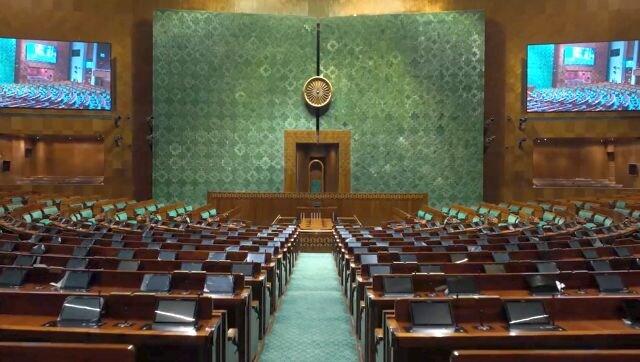
The new Sansad
The new building has 888 seats in the Lok Sabha chamber and 384 seats in the Rajya Sabha chamber. The open courtyard constructed at an area of 2,000 sq metre will feature a banyan tree.
The building’s six entrances display “guardian statues showing auspicious animals”, which have been selected on the basis of their significance in Indian culture, vaastu shastra and the traits they represent.
The north entrance has a gaja or elephant, which symbolises wisdom, fortune, intellect and memory. The ashva or horse, representing “endurance, strength, power and speed”, guards the southern doorway.
Garuda or eagle, symbolising the “aspirations of the people” can be found at the eastern entrance. Swan or hamsa, which represents wisdom, is exhibited at the north-eastern entrance.
Two mythical creatures – makara and shardula – are displayed at other entrances of the new building. While the makara symbolises unity in diversity, shardula represents the power of the people, an Indian Express report explained.
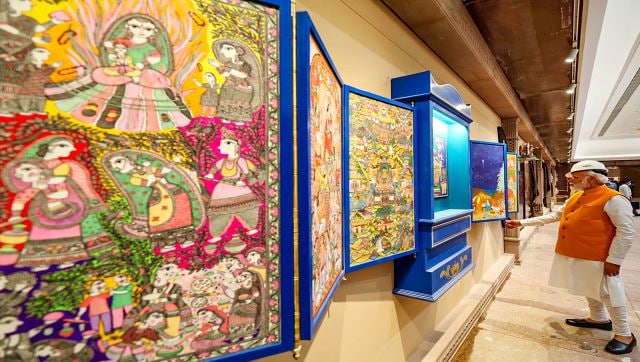
Inside of new Parliament building
The new Parliament complex will have a grand Constitution Hall to display the “democratic heritage” of the country. Unlike the existing complex, the new Parliament does not have a Central Hall.
Based on the peacock theme, the new Lok Sabha chamber is three times bigger than the one in the existing building. The new Rajya Sabha hall is built on the lotus theme – India’s national flower.
Last July, prime minister Modi had unveiled the National Emblem cast on the roof of the new Parliament building. The 6.5-metre-high bronze emblem weighs 9,500 kg. The new Parliament building is also equipped with six granite statues of important personalities, including freedom struggle leaders. Moreover, there are four galleries each for Lok Sabha and Rajya Sabha, three India galleries, a Constitution gallery and three ceremonial foyers.
The new complex will feature portraits of Mahatma Gandhi, Subhas Chandra Bose and also prime ministers of India, as per News18.
Also read: New Parliament building and the many controversies surrounding the structure
Each wall inside the building will showcase different themes such as the contribution of tribal and women leaders, noted Indian Express.
The official vision document for the new Parliament building says: “The artworks and its installation represent sanatan parampara that continued over thousands of years. Along with that, the overall theme is designed keeping in mind the study of vaastu shastra and maintaining the character of the building.”
The artworks will “depict Indian ethos and identity, related to both the civilisation and culture”, an official told Indian Express.
With inputs from agencies
Read all the Latest News, Trending News, Cricket News, Bollywood News,
India News and Entertainment News here. Follow us on Facebook, Twitter and Instagram.
What's Your Reaction?



























































